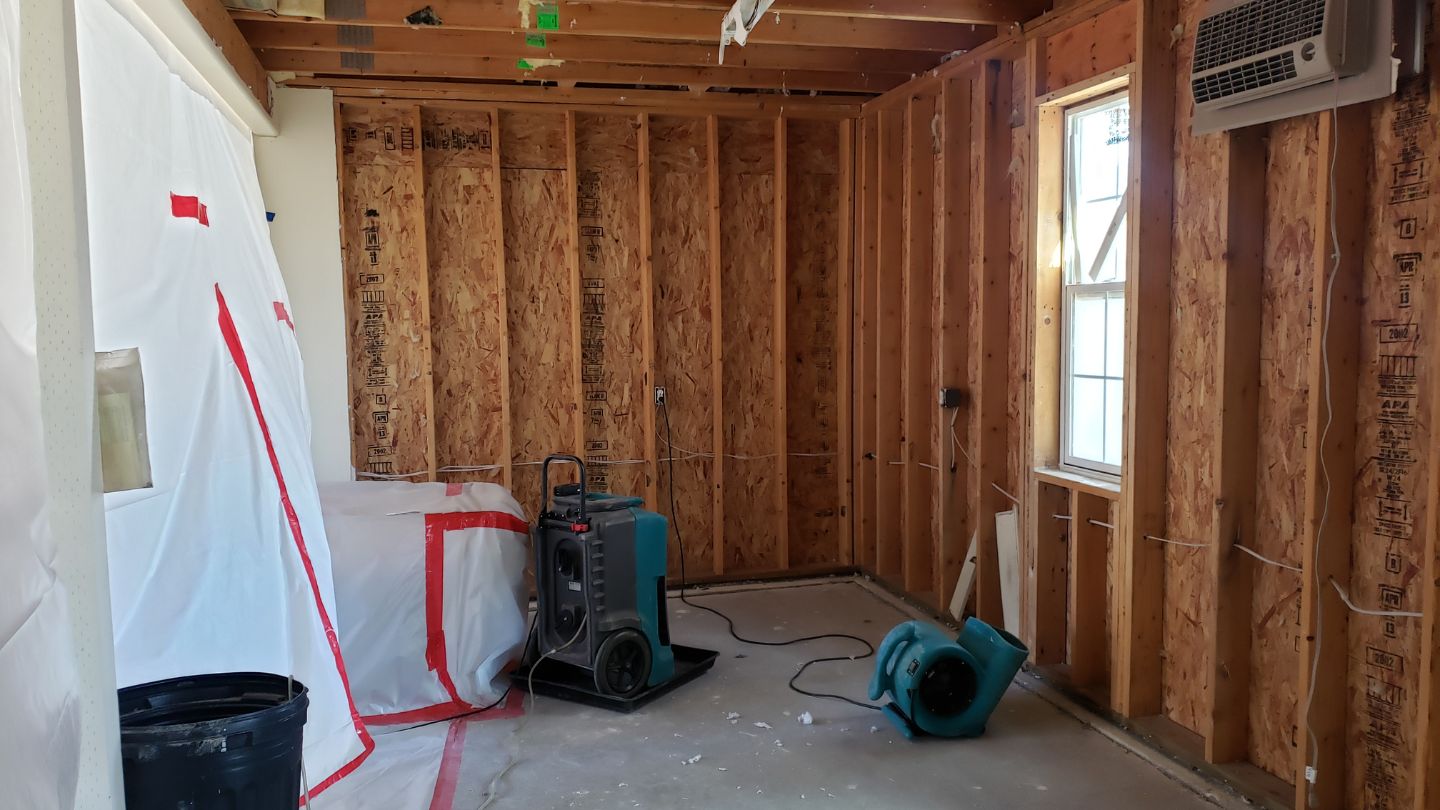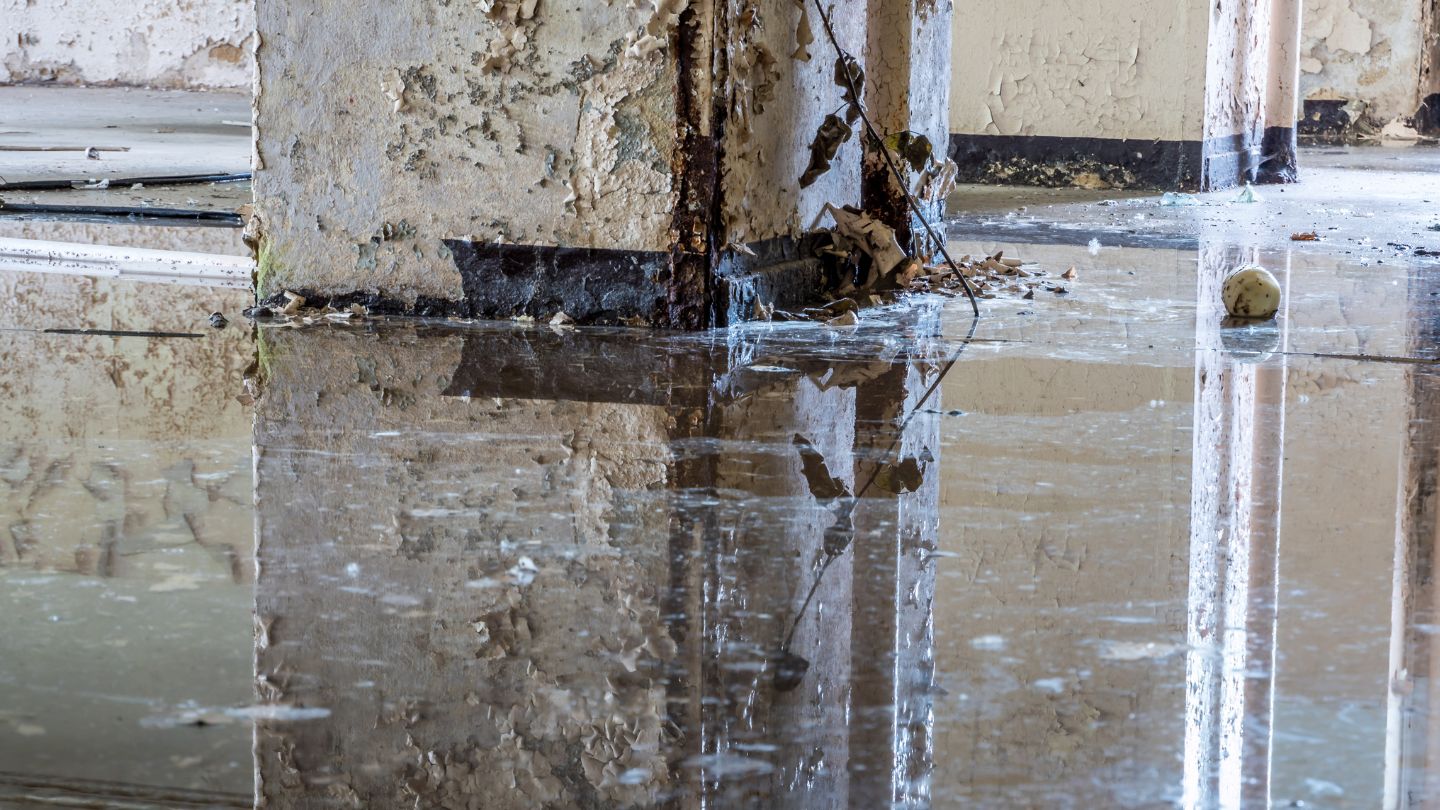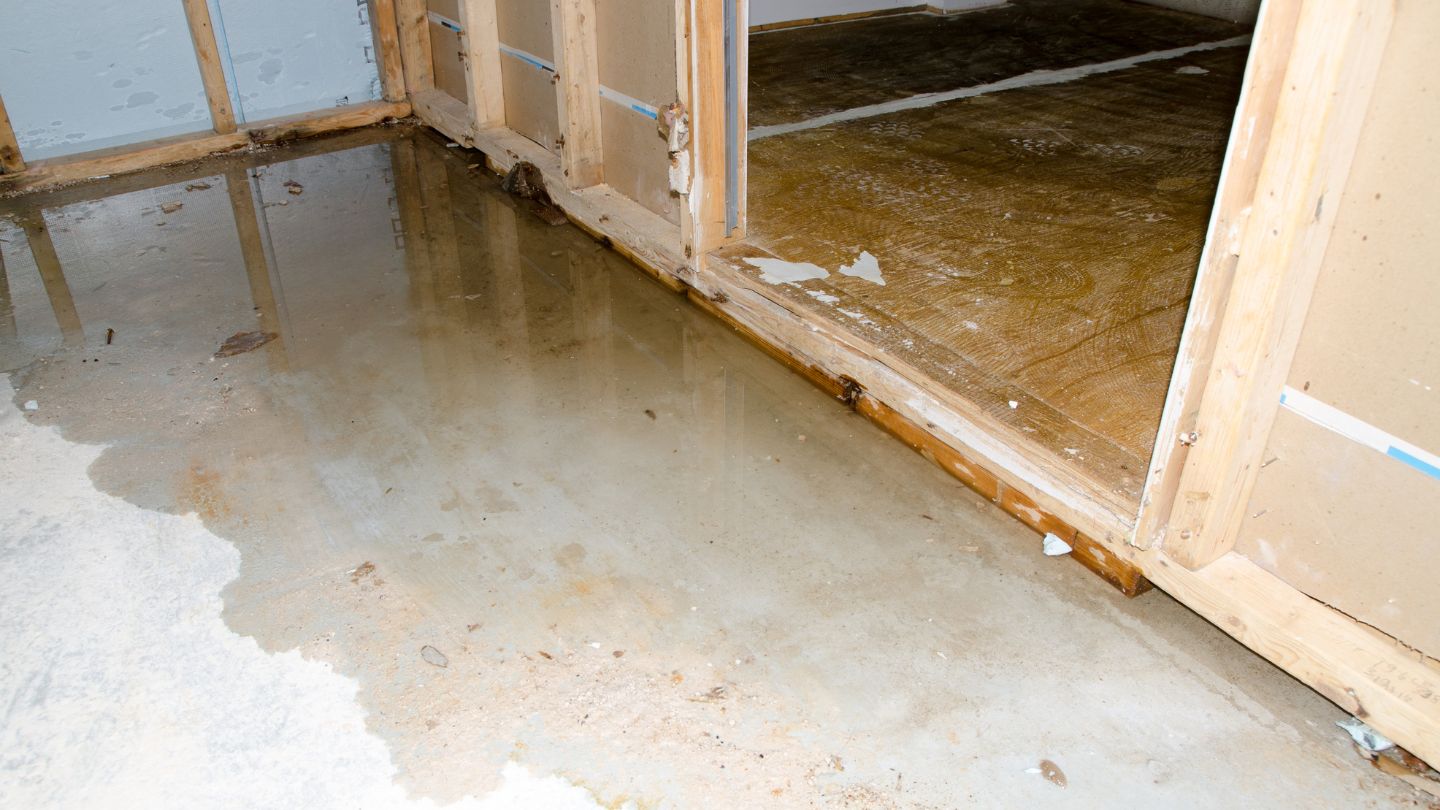The time it takes for water damage restoration can vary widely, typically ranging from a few days to several weeks. Factors such as the extent of the damage, the type of water involved, and the size of the affected area all influence the timeline. This blog will break down these factors and help you better understand the restoration process.
Key Takeaways
- The duration of water damage restoration is influenced by factors such as the extent of damage, the type of water involved, and the size of the affected area.
- The restoration process typically includes stages: assessment, water removal, drying, cleaning, and repairs, with timelines varying from days for minor damage to months for severe damage.
- Acting quickly, hiring professionals, and maintaining communication with insurance providers are key strategies to expedite the water damage restoration process.
Key Factors Affecting Water Damage Restoration Duration
The water damage restoration process can take a varied amount of time, which is influenced by numerous factors. Recognizing these elements aids in setting expectations and making suitable plans for the situation at hand. These include:
- The severity of the water damage
- The source and quality of the water causing the issue
- The scope of space impacted
These aspects are crucial in estimating the duration needed to complete the restoration.
The degree of harm inflicted plays a pivotal role. Minor instances may be rectified swiftly, whereas more severe destruction that encompasses an entire room or has led to significant structural compromise will invariably require additional time for repair. Extensive deterioration will inevitably extend this timeline when it involves areas with existing water damage. Understanding essential tips for picking a water damage restoration company in Atlanta can greatly streamline the recovery process, ensuring efficient restoration tailored to the severity and source of the damage.
Water’s origin significantly influences how easily it can be addressed: uncontaminated water from sources like burst pipes poses fewer challenges than hazardous waste waters originating from incidents such as sewage backups. Larger spaces affected necessitate greater labor and extended periods for full recovery.
Grasping these variables sheds light on why timelines fluctuate so greatly during various stages within any given case, highlighting both their importance as well as illuminating reasons behind undertaking thorough restorations after experiencing adverse events involving fluid intrusion. Next steps involve examining each point closely to better understand their individual contributions to overall efforts required in remediation endeavors following any instance where liquid-induced impairments occur.
Extent of the Damage
Determining the scope of destruction is a vital factor in determining how long the restoration process will take. When water damage spreads across various rooms or sections, it leads to an extended period for remediation and reconstruction efforts. It’s critical to assess the class of water damage. Particularly, Class 3 or 4 levels could require dismantling segments of walls or flooring, which would substantially prolong the drying and dehumidification stages.
Prompt measures can significantly diminish both the magnitude of harm incurred and subsequent expenses. Taking immediate precautionary actions can lessen impacts on structural components and materials, consequently expediting the overall restoration timeline.
Type of Water Involved
Another pivotal element in the restoration process is the type of water that caused the damage. Water damage falls into three distinct categories:
- Clean (Category 1): This involves water from hygienic sources, such as rainwater or supply lines, and represents the least contaminated type, making it relatively simple to manage.
- Gray (Category 2): This category includes water that carries some level of impurities, necessitating a more intensive cleanup effort compared to clean water.
Black water significantly heightens health hazards due to its high levels of contamination. It demands rigorous decontamination and sanitation steps. The greater the contamination present in all involved waters, the more prolonged the process necessary for restoration will be because additional cleaning actions and safety precautions must be implemented.
Size of the Affected Area
The scope of the area impacted by water damage is a crucial determinant in the duration of the restoration process. When dealing with larger square footage affected, more time and resources are necessary to achieve full restoration. The types of materials involved can influence how long it takes to dry out an area. Materials such as wood and carpets often pose challenges that could prolong the timeline.
Conversely, when minor damage occurs in localized areas, these can typically be restored quickly. The amount of square footage that has been damaged bears a direct relationship to how long the process will be for restoring those areas to their original condition.
Steps in the Water Damage Restoration Process

The water damage restoration process is an intricate and systematic strategy aimed at restoring your property to its state before the incident. This sequence of actions in the water restoration process, including essential steps from drying to cleaning, guarantees a comprehensive rejuvenation of your space. The progression from initial evaluation through final touch-ups is critical for reviving the overall condition of your property.
This remedial journey encompasses:
- Conducting a thorough inspection as an initial assessment.
- Extracting and eradicating accumulated water.
- Implementing drying and dehumidification following the removal of standing water.
- Undertaking cleansing and sanitation measures to eliminate potential contaminants.
- Executing necessary repairs and reconstruction efforts to return the property to its former glory.
Grasping each segment’s significance in this elaborate procedure is key for setting realistic expectations and achieving effective restoration results—a closer look into these phases will clarify their importance in mending damaged properties successfully.
Initial Assessment and Inspection
The process of restoring water damage begins with a critical initial assessment and inspection. This stage is essential as it allows restoration experts to detect the origin of the water and determine the contamination level, which then guides them in establishing the extent and method necessary for decontamination.
This phase includes classifying the severity of water damage, which influences how much drying will be needed, along with other measures that must be taken in later stages of the damage restoration process.
Water Removal and Extraction
The restoration process is crucial in safeguarding the property from additional harm. Industry-grade vacuums and pumps capable of submersion are employed by specialists to effectively eliminate standing water. Carrying out this step diligently reduces the chance of mold proliferation, structural impairment, and water intrusion.
Professionals providing restoration services employ sophisticated instruments such as moisture meters and infrared thermal cameras to uncover concealed dampness pockets. Comprehensive management of both visible water removal and hidden moisture is imperative for averting subsequent damage and guaranteeing the efficacy of the entire restoration effort.
Drying and Dehumidification
The removal of water is followed by the initiation of the drying and dehumidification phase. This crucial step involves employing sophisticated equipment designed to locate concealed dampness, guaranteeing that all impacted areas are completely dried out. To achieve this, commercial-level dehumidifiers, robust fans, and negative air machines work in concert to extract moisture from both the atmosphere and various surfaces.
Depending on how severe the damage is and what types of materials are involved, the time required for the drying process can range from just a few hours up to several days. It’s essential for preventing mold proliferation as well as additional complications with structural integrity to make sure that everything within your property has been thoroughly dried out.
Cleaning and Sanitization
It is crucial to eradicate any pollutants resulting from water damage through thorough cleaning and sanitization. The use of top-quality cleaning tools, including HEPA vacuums and air scrubbers, plays a significant role in this stage. To safeguard against potential hazards during the mold cleanup process, appropriate personal protective gear is worn.
To exterminate dangerous bacteria, particularly those associated with Category 3 water damage, surfaces must be treated with antimicrobial agents. Skilled professionals promptly detect areas prone to mold growth and address them to halt its proliferation.
Repairs and Reconstruction
The concluding segment of the restoration process for water damage centers on executing repairs and rebuilding. During this phase, it might be necessary to discard and substitute irreparable materials like drywall, floors, and cabinets. The aim is to return the property to its original state before the damage occurred while also averting potential problems and securing structural soundness.
Companies specializing in damage restoration manage a spectrum of tasks from small-scale fixes to extensive overhauls, making certain that all compromised structural elements and building materials are duly attended to. A thorough cleaning along with meticulous record-keeping ensures that once completed restorations have been made, the property is ready for occupancy again.
Typical Timelines for Water Damage Restoration

The duration of restoration efforts is largely contingent on the extent of water damage incurred. Grasping standard recovery timelines for varying degrees of damage assists in establishing feasible expectations and facilitates appropriate planning measures. Situations involving minor water damage usually reach resolution within a few days, whereas circumstances featuring more extensive harm may necessitate several weeks to rectify.
Timelines for remediation fluctuate according to the severity of water impairment.
- Instances categorized as minor typically demand anywhere from one day up to three days for adequate resolution.
- Moderate levels of destruction might call for a timeframe stretching from one week to a fortnight.
- In contrast, severe instances can stretch out over numerous weeks or even extend into months before full rehabilitation is achieved.
To elaborate upon these outlined timeframes:
Minor Water Damage
The restoration process for minor water damage, which consists of small areas impacted by clean water, can often be completed in a span of one to three days. Depending on the particular situation, this process of restoring areas with minimal damage can take up to a week, but is characteristically quick.
Moderate Water Damage
Complete restoration from moderate water damage, potentially encompassing broader areas or containing gray water, typically necessitates a duration of one to two weeks.
Depending on the severity and scope of the damage sustained, the timeframe for rectifying moderate water damage may stretch up to a fortnight.
Severe Water Damage
The process of restoration can be extensively delayed when it involves severe water damage, which may include black water contamination or substantial structural damage. Addressing this level of damage usually spans a timeframe from several weeks to even months.
Due to the intricate nature of significant damage, a thorough and multifaceted approach is required, thus lengthening the overall duration necessary for restoration.
Tips to Expedite Water Damage Restoration
The restoration process following water damage can be an extensive affair, but there are methods to speed it up. Taking immediate action, selecting a professional restoration company with expertise in damage restoration, and keeping open lines of communication with your insurance provider are essential tactics for facilitating quicker rehabilitation. By adhering to these recommendations, the adverse effects of water damage can be lessened, and the time required for restoration can be diminished.
Prompt measures play a pivotal role in preventing Harm and curtailing the duration needed for full recovery. Employing a proficient restoration company ensures that every step of the water damage restoration is conducted both quickly and effectively. Continuous interaction with your insurance firm helps speed up the claims procedure while eliminating possible delays that could extend timelines unnecessarily.
Act Quickly
It is critical to respond swiftly following an incident of water damage in order to curb additional harm and shorten the duration needed for restoration. Procrastination in initiating the restoration process may result in deteriorating situations, such as the proliferation of mold and damage to structural integrity.
An immediate reaction is crucial to limit potential damages and guarantee a favorable outcome from water-related losses.
Choose a Professional Restoration Company
Engaging a professional restoration company is crucial for a comprehensive and efficient restoration process. The services offered by such companies include:
- Evaluating the risks of mold and devising strategies to remediate it, safeguarding both health and property.
- Skilled experts who guarantee that the restoration work is conducted appropriately.
- Mitigation against substandard or unfinished tasks that could lead to subsequent complications.
Maintain Communication with Your Insurance Company
Keeping in touch with your insurance providers is crucial to facilitate the claims process and prevent any unnecessary delays. Regularly sharing updates with the restoration service can lead to a clearer understanding of the damage, which helps prioritize the recovery of valuable items.
When technicians convene with an insurance adjuster at the location of the damage, they have an opportunity to offer comprehensive details about what has occurred. This step is vital for efficiently progressing through the claims procedure.
Why Professional Restoration is Essential
Engaging a professional in damage restoration is critical for adeptly managing significant water damage and guaranteeing comprehensive and secure remediation. By enlisting the services of a dedicated water damage restoration company, you can ensure that the damage is managed properly and mitigated effectively to stave off additional structural compromises and health hazards. These specialists are equipped with both the knowledge and specialized equipment required to safely navigate intricate restoration scenarios.
These expert restoration services aim to restore properties to their original state before the loss occurred, taking into account all forms of damage, both evident and concealed. Failing to promptly address water damage could lead to grave health risks from exposure to polluted water or mold proliferation, underscoring why immediate intervention by professionals is indispensable.
Expertise and Equipment
Hiring experienced restoration experts ensures effective management of complex water damage situations, as they are equipped with specialized training and tools. These professionals adeptly handle hazardous materials and help mitigate the risks of long-term damage.
Comprehensive Services
Expert restoration firms offer an extensive array of services, such as water extraction, cleansing, mold remediation, and mold cleanup. Engaging the services of professionals guarantees the use of specialized expertise and sophisticated equipment that aid in efficiently restoring water damage.
Their inclusive strategy encompasses every element of destruction management from the preliminary evaluation through to complete repairs.
Restoring Your Space with Confidence
Water damage restoration timelines can vary based on the severity of the damage, the size of the affected area, and the restoration methods. While minor issues may take just a few days, more complex situations could extend to weeks. Understanding these factors equips you with realistic expectations and ensures you’re prepared for the process ahead.
If you’re looking for a reliable water damage restoration service in Buford, 911 Floods R Us is here to help. With our dedicated team and proven expertise, we work to restore your property efficiently and thoroughly. Take advantage of our services and enjoy peace of mind knowing your home is in safe hands. Don’t wait to address water damage. Reach out to us today and protect your home for the future!
Frequently Asked Questions
How long does it typically take for water damage restoration?
Water damage restoration typically takes one to three days for minor damage, one to two weeks for moderate damage, and several weeks to a few months for severe damage.
The exact duration is influenced by the extent of the damage, the type of water, and the size of the affected area.
What should be done immediately after water damage occurs?
Immediately contact a professional restoration company to assess the water damage and initiate the restoration process, as delays can result in further complications such as mold growth and structural damage.
Why is it important to hire a professional restoration company?
It is essential to engage a professional restoration company because they have the specific expertise, tools, and services required to handle water damage efficiently. This ensures complete restoration while also safeguarding against subsequent problems such as mold growth.
How does the type of water involved affect the restoration process?
The type of water involved greatly affects the restoration process, with clean water (Category 1) being manageable, gray water (Category 2) necessitating extensive cleanup, and black water (Category 3) demanding rigorous decontamination due to its health risks.
Accurate categorization is essential for effective restoration strategies.
What role does communication with the insurance company play in the restoration process?
Effective communication with your insurance company is vital in the restoration process as it facilitates a smooth claims experience and minimizes delays.
Regular updates and direct interactions with the insurance adjuster enable a thorough understanding of the damage and ensure that restoration efforts are prioritized accordingly.

